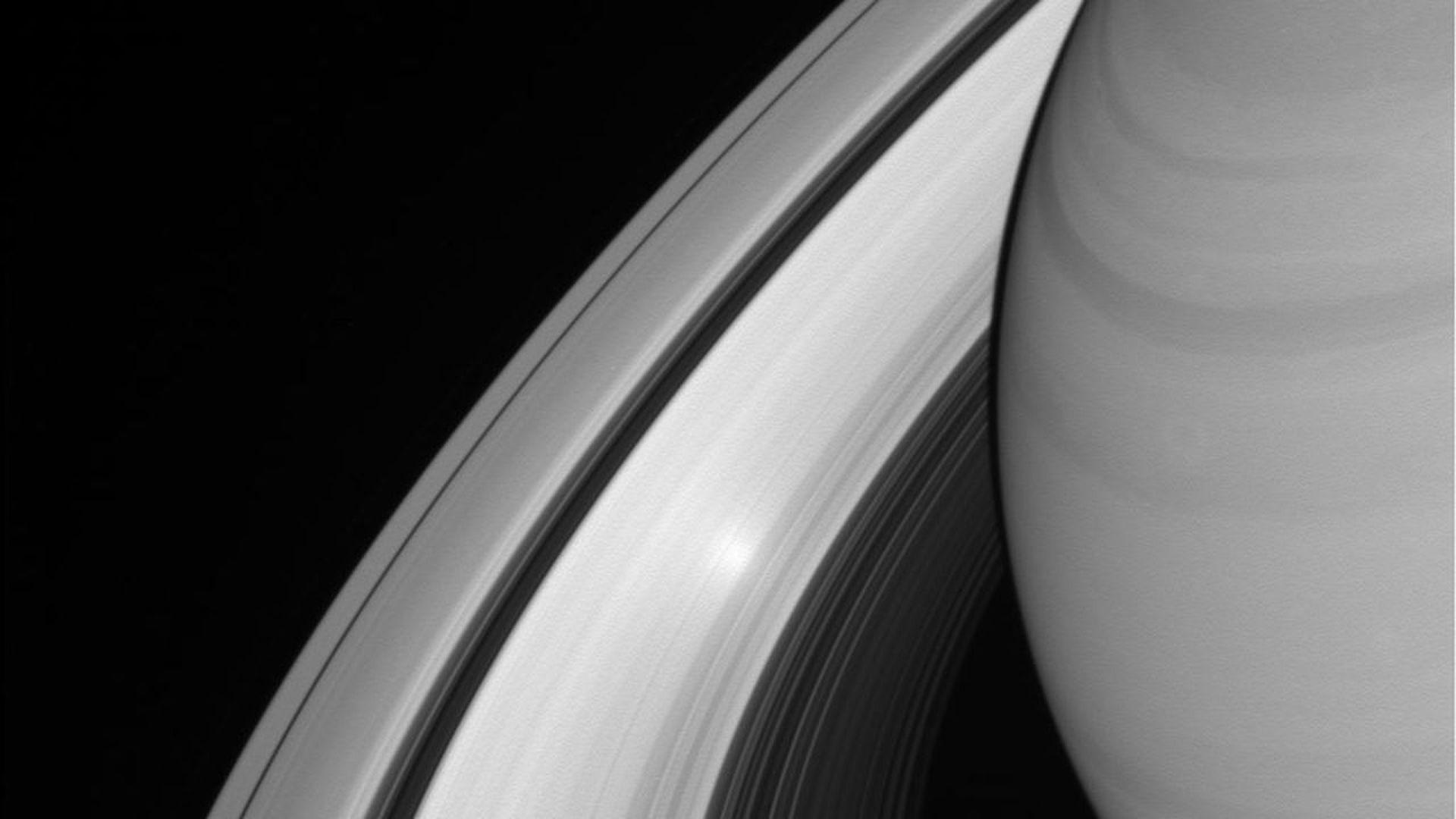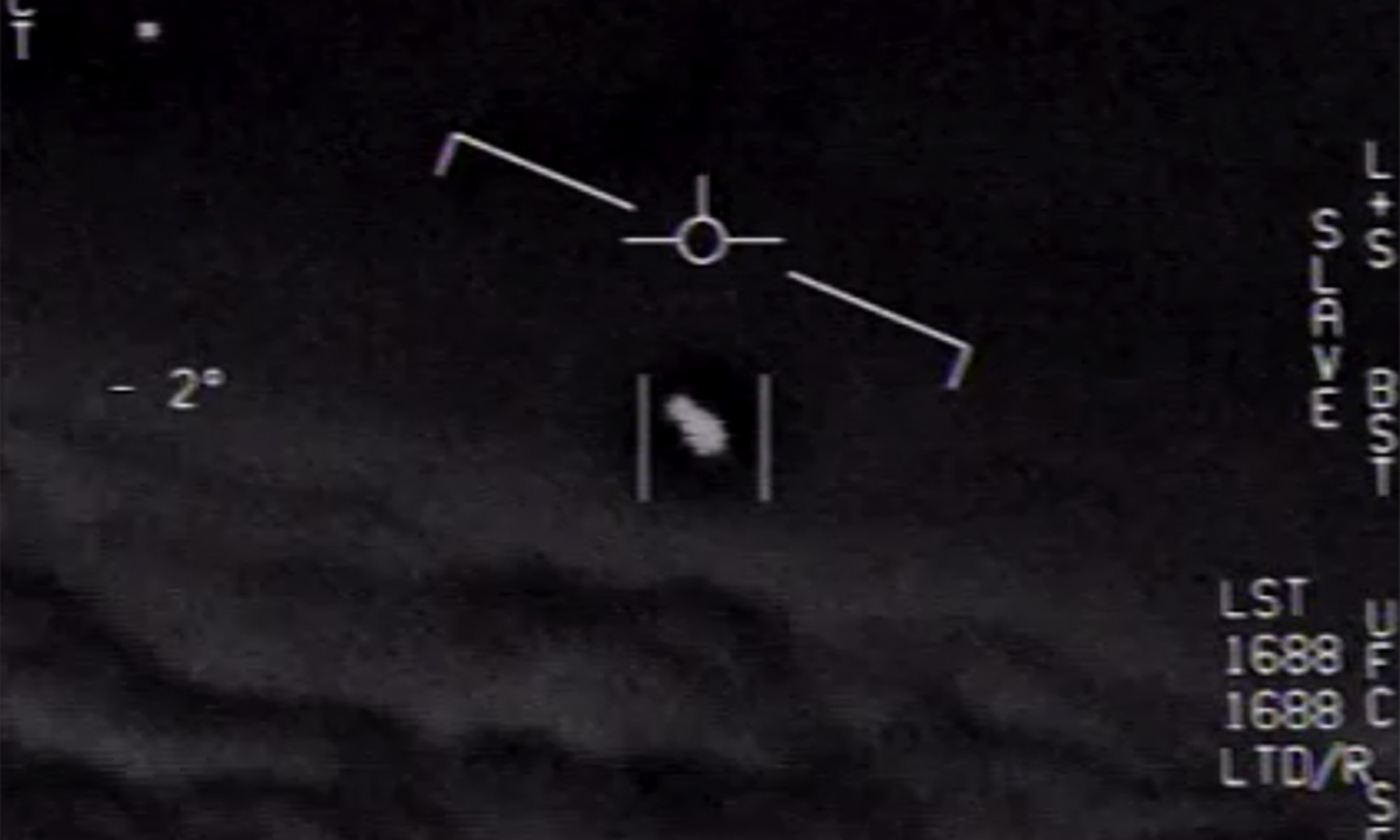
A new mission concept aims to pick up where NASA’s Cassini spacecraft mission left off, by achieving a close study of Saturn’s renowned rings. Matthew Tiscareno, a senior research scientist at the SETI Institute and one of the scientists developing the mission proposal, spoke to Axios about potential of the Saturn Ring Skimmer, a craft that would get close enough to the rings to collect a dust sample:
“We’re talking about 50–100 times as close to the rings as Cassini got at least when it was taking [its best] images,” Tiscareno said.
While Cassini provided groundbreaking views of the alluring planet, it also raised new questions, Tiscareno says:
“There are a lot of science questions about what individual ring particles look like and what they do,” the SETI Institute’s Matthew Tiscareno, one of the scientists developing the plan, tells Axios. “We’ve never seen individual ring particles, but with the ring skimmer, we definitely would.”
Tiscareno and the rest of the team of scientists behind the Saturn Ring Skimmer concept will submit the proposal to NASA for consideration.
- Axios: Skimming Saturn's rings
 US Navy to Issue New Guidelines on Reporting Unexplained Aerial Phenomena
US Navy to Issue New Guidelines on Reporting Unexplained Aerial PhenomenaPolitico reports that the U.S. Navy has updated its guidelines for reporting unexplained aerial phenomena (UAE), such as unidentified objects or aircraft intruding on controlled airspace, formalizing the process and reducing stigma for pilots who witness unusual activity. Sightings of unknown craft by military personnel don’t necessarily imply that the Navy believes E.T. is to blame, as SETI Institute senior astronomer Seth Shostak told NBC News MACH:
The Navy's changing rules are by no means an acknowledgement that alien spacecraft might be among the unidentified aircraft that have been reported, according to Shostak. “There’s always going to be a group of people that leaps to the more interesting conclusion,” he said. “But 90 percent of these sightings turn out to be a laundry list of things like birds, balloons, or other aircraft.”
But Shostak praised the Navy for taking steps to ensure that military pilots who report unexplained aircraft don’t "get laughed at."
While unlikely to be alien craft, Shostak points out in the Washington Post, the Navy has a legitimate security concern:
“These days, you do worry - are the Chinese doing reconnaissance, are the Russians doing reconnaissance, on military activity?"
Again, speaking to the Washington Post, Shostak reiterated his skepticism that these sightings indicate the presence of extraterrestrials on Earth:
"If they are here, if they are sailing the skies, you have got to say - they are really great house guests," Shostak said. "They never kill anybody . . . they don't even delay the flights out of Reagan."
This isn’t the first time the U.S. government has shown an interest in collecting data on UAEs: last year news broke that the Pentagon had run a secret UFO investigation program from 2007 to 2012. The study did not appear to find compelling evidence of extraterrestrial visitation.
- NBC News MACH: U.S. Navy is revising rules to encourage pilots to report unusual sightings
- Washington Post: Navy: No release of UFO information to the general public expected
- LiveScience: Navy Plans to Document UFO Sightings, But Keep Them Confidential
- SETI.org: UFO believers got one thing right. Here's what they get wrong
 Greetings from Earth – a Bad Idea?
Greetings from Earth – a Bad Idea?The idea of contacting extraterrestrials is as exciting and controversial today as it was 1977 when the Golden Record was placed on the two Voyager spacecraft. Prior to Voyager, the Pioneer plaques were placed on board the Pioneer 10 and 11 spacecraft - like a message in a bottle, the artifacts were meant to convey information about life on Earth should another species encounter the craft as they wander ever farther through the reaches of space. Astronomer and Chair Emeritus of the SETI Institute’s Board of Trustees Frank Drake (of Drake Equation fame) worked on both projects and told San Francisco’s KPIX CBS Local News, “This was a way of telling another civilization about us.” Drake, along with beloved astronomer and science communicator Carl Sagan, also wrote the Arecibo Message, the most powerful broadcast ever deliberately beamed into space. Drake explained to KPIX:
“It only has 1,273 characters, so it’s very short and yet it describes the basic chemical makeup of the DNA molecule which is the key to the behavior and activities on earth,” noted Drake.
While Messaging Extraterrestrial Intelligence (or METI) has been a point of interest for some time, the wisdom such endeavors is debated within the scientific community. KPIX spoke to, Andrew Fraknoi, SETI Institute Science Advisory Board member and retired professor of astronomy:
“If we’re going to be deciding to advertise our presence to the universe, we should have a discussion with the rest of the world,” said Fraknoi.
Fraknoi explained how some scientists believe we should just passively listen in on the universe rather than blabber about Planet Earth out in space.
“Are we ready to signal out there that we on earth exist? We are barely getting along with each other. Are we ready to get along with aliens?” commented Fraknoi.
On the other hand, Drake points out that radio and television broadcast signals alone are enough to alert any intelligent species close enough to detect them:
“It’s too late, folks. We’ve made our presence known big-time,” said Drake.
- San Francisco KPIX CBS Local: Efforts To Search For, Send Messages To Extraterrestrial Life Advance In Digital Age
In last week’s episode, learn why DNA doesn’t tell the whole story in Identity Crisis. On our previous week’s episode, test the limits of language as the team covers teaching humor to AI, talking to ET, and what cheese has to do with sharing a message of peace, in Gained in Translation.
Last time on Facebook Live, SETI Institute CEO Bill Diamond spoke with scientist Lori Fenton about her upcoming field research to study dust devil formation. Videos of all past Facebook Live events can be found on our Facebook page: https://www.facebook.com/SETIInstitute/
- California Academy of Sciences NightLife in Space: May 9, 2019, San Francisco, CA SETI Institute scientist Franck Marchis will participate
- California Academy of Sciences Astronomy Day: May 11, 2019, San Francisco, CA SETI Institute scientists Franck Marchis and J.R. Skok will participate
- Silicon Valley Astronomy Lecture Series: May 15, 2019 Los Altos, CA SETI Institute scientist Ross Beyer will present, Charon, Pluto’s Companion: What We’re Learning from New Horizons
- California Academy of Sciences NightLife in Space: May 16, 2019, San Francisco, CA SETI Institute senior astronomer Seth Shostak will participate
- AI for Good Global Summit: May 28-13, 2019, Geneva, Switzerland Bill Diamond, President and CEO of the SETI Institute, and James Parr, Director of Frontier Development Lab (FDL) will be participating in sessions exploring AI and space
- AbSciCon: June 24-28, 2019, Bellevue WA The SETI Institute will be a participating sponsor and numerous SETI Institute scientists will be presenting their work
- IAU Chile: June 30-July 6, 2019, Copiapo, Chile SETI Institute research scientist Meng Jin will offer a talk: Coronal dimming as a proxy for stellar CMEs





